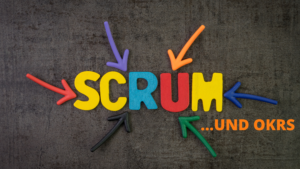How can we synchronize our work with different departments in the company? How can we set a common goal? How can we make goal-setting more transparent?
These questions kept getting more and more prominent for us back in March 2019. Who we are? We are Wellnest. We have embarked on a journey to become what is the most laid-back company in Germany. In a fast-paced world, we offer our clients a deep and holistic relaxation experience for the body and soul. In this quest, agile working methods have accompanied us from the very beginning. As a result of the emerging questions as to how we can view and plan our work more holistically, we have started looking into the topic of OKRs. After researching the topic and coming up with an initial implementation idea, in April 2019 we set out to explore how working with OKRs would work for us. Within a few weeks, we went from a problem to an idea and finally to a solution experiment – this speed is certainly one of the advantages you can enjoy as an Agile coach in a start-up. Quarter by quarter we are now synchronizing our work with the help of OKRs. At the start, we did everything by the book. Quarterly Retrospectives allowed us to adapt the OKR method more and more to our needs. Since growth is the primary goal of a start-up, it was imperative to us that our adapted OKR method could handle growth. Therefore, we have combined elements of the OKR method with aspects of the Scaled Agile Framework (SAFe).
In December 2021, other questions grew louder: How can we make our OKRs less individual- and subject-oriented and more cross-functional? How can we make OKR planning more effective with regard to interdisciplinary dependencies and human resources? How can we better match our roadmap with our OKRs?
It was clear to us from these questions, that we had reached the next level. Simply synchronizing the work of all departments was no longer sufficient. We needed a new layer to help us link OKRs and corporate strategy.
Looking for inspiration, I browsed our bookshelf at home. The book „Living Transformation“ immediately caught my eye, and I started reading the chapter „LivingStrategy“. A week later, my colleagues had a 4-day blocker for our „Strategy Days“ in their calendars and I found myself in the middle of the workshop preparations with our managing director.
The first strategy day focused on vision and mission. While our vision and mission had already been communicated with the team, we wanted to integrate them into the everyday work by making them more visible. Because let’s be honest: Can you tell me the vision and mission of your company, if I asked you right now? No? Until that workshop, neither could I.
We started the day with inspiring and motivating words about our journey so far and our big goal, underlined by a few PowerPoint slides. The „one-pager“ exercise introduced by the “Living Strategy” helped us share a common understanding of the words and helped us render them more tangible. The exercise consisted of two parts. First, you draw the words of the vision statement: Each person drew a picture of what the vision looked like in their head. It was astonishing that, while being very different in their design, the pictures – for the most part – had the same message at their core.
After this exercise, we worked on two promises – one to ourselves and one to our customers. The jointly developed one-pager is displayed in our office, so that our WHY is present every day – and not sitting on PowerPoint slides in hidden file paths waiting to be presented again.
After this inspiring first day, the focus of the second day was on the „strategy radar“, the second tool of the “Living Strategy”. We looked at a total of six dimensions on a whiteboard for the period from 2022 to 2025. After a brief introduction to the task, all participants took part in a 60-minute brainstorming session. It was up to them to decide how they wanted to work on this task. Some started alone, others in smaller groups, and, at times there were exchanges between brainstorming groups and partners. After 60 minutes, we all met back at the whiteboard and filled the strategy radar with content. One after the other, all milestones to be achieved by 2025 in the different dimensions were presented, questioned, in some cases discussed, and finally sorted chronologically on the radar. As expected, most of the milestones to be achieved were in the near future, and only a few milestones were at the outer edge of the radar. From the clustered post-it notes, we were able to identify eight projects for 2022, five for 2023, and one each in 2024 and 2025. This made it possible to visualize low-priority issues, which promoted understanding and the willingness to compromise of all participants. The strategy radar helped us to reduce our individual backlogs to a common one and agree on goals for 2022.
On day three and four, we deepened our insights from the “strategy radar” with the help of the „strategic roadmap“, the third “Living Strategy” tool.
The aim of our 4-day strategy workshop was to structure the year 2022 from a holistic perspective and merely outline the years 2023 – 2025. For this reason, our strategic roadmap only covered the year 2022. We started off by forming cross-functional project teams for each of the eight identified projects and selected a project lead. Each cross-functional team then proceeded into resource, detail, and dependency planning. In the open space of our office, we then visualized the year 2022 as a timeline, where each project lead marked the start, the end, and essential milestones of their project.
At the end of the fourth day, we reviewed the strategic roadmap for 2022 together and discussed once again priorities, capacities, and dependencies. We ended our strategy days with a commitment, good sushi, and an after-work beer.
Do you wonder what has become of our OKRs? They will, of course, continue to accompany us. We now derive our OKRs on a quarterly basis from the strategic roadmap based on the milestones of our projects. As I described at the beginning, we were looking for a way to link our daily work with the corporate strategy and we will now find out if it worked out.
Ramona Strauch (Agile Coach)


